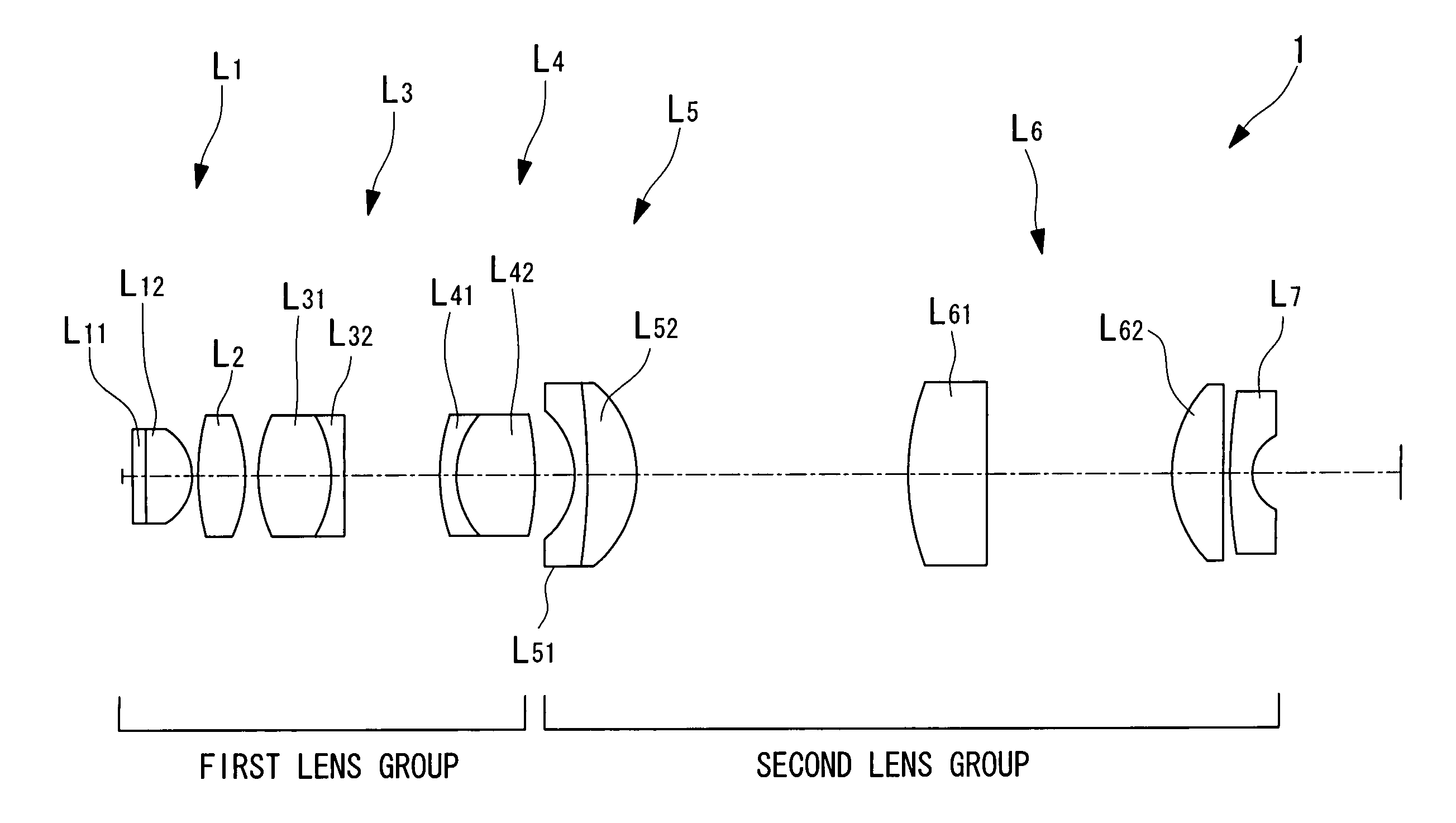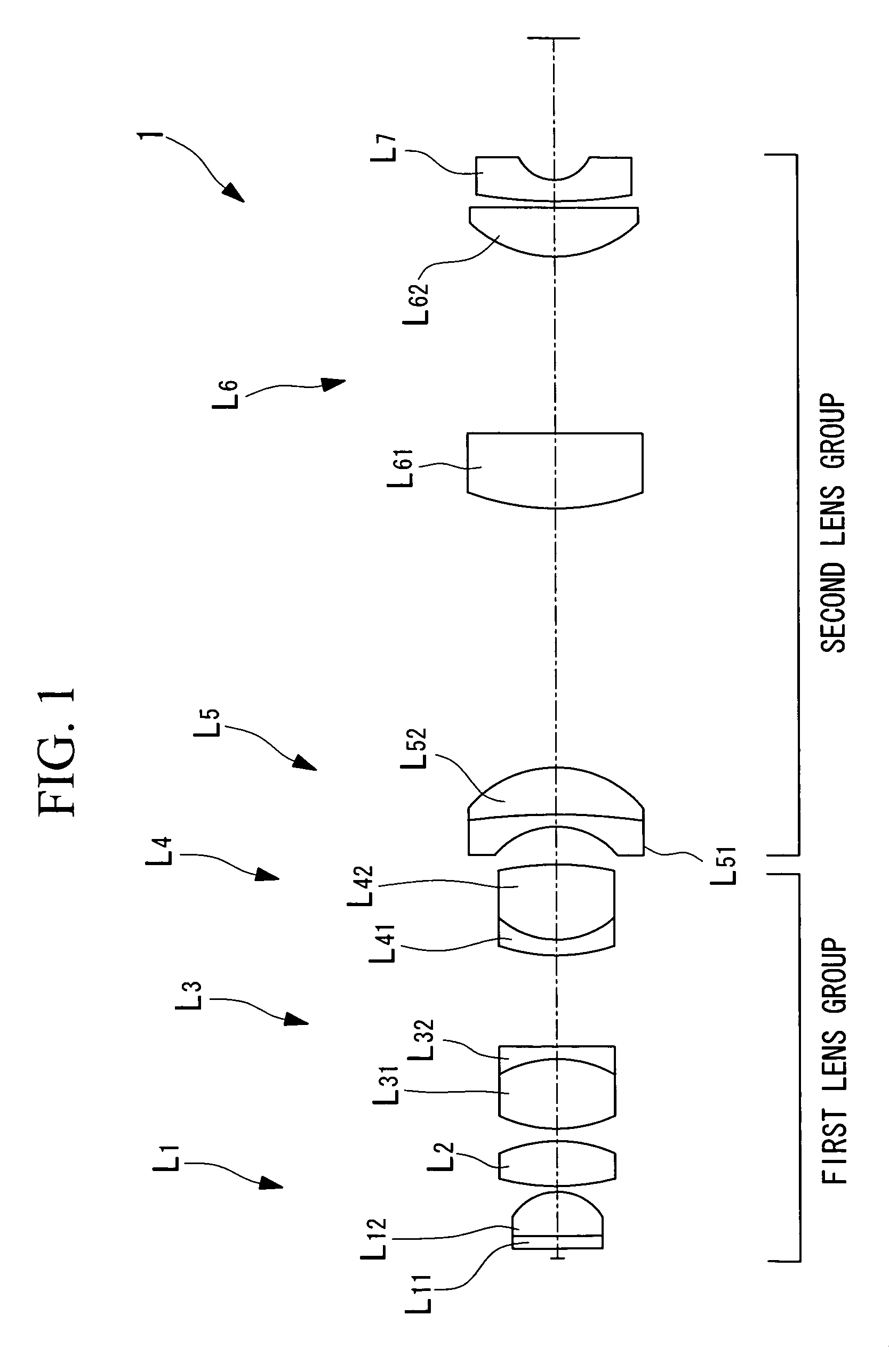Liquid-immersion objective optical system
a liquid immersion and optical system technology, applied in the field of objective optical systems, can solve the problems of insufficient examination of the behavior of molecules in the tissue and cells of the organism, low level of invasiveness to the organism, and inability to carry out long-term examination, so as to prevent relative motion, prevent image blurring, and prolong the overall length
- Summary
- Abstract
- Description
- Claims
- Application Information
AI Technical Summary
Benefits of technology
Problems solved by technology
Method used
Image
Examples
example 1
[0074]A first example of the liquid-immersion objective optical system 1 according to the embodiment described above will now be described with reference to FIGS. 3 to 5B.
[0075]As shown in FIG. 3, the liquid-immersion objective optical system 1 according to this example includes a first lens group formed of first to fourth lens components L1 to L4 and a second lens group form formed of fifth to seventh lens components L5 to L7. The first lens component L1 is formed of a parallel flat plate L11 and a plano-convex lens L12 having positive refractive power, whose convex surface faces the image-plane side. The second lens component L2 is formed of a biconvex lens with positive refractive power, having one convex surface facing the image-plane side and one convex surface facing the object side.
[0076]The third lens component L3 is a compound lens with positive refractive power as a whole, which is formed by cementing to each other a biconvex lens L31 and a negative lens L32. The fourth le...
example 2
[0088]Next, a second example of the liquid-immersion objective optical system 1 according to the above-described embodiment is described with reference to FIGS. 6 to 8B.
[0089]As shown in FIG. 6, the liquid-immersion objective optical system 1 according to this Example includes a first lens group formed of first to fourth lens components L1 to L4 and a second lens group formed of fifth to seventh lens components L5 to L7. The first lens component is formed of a parallel flat plate L11 and a plano-convex lens L12 with positive refractive power, whose flat surface faces the object side and whose convex surface faces the image-plane side. The second lens component L2 is formed of a plano-convex lens with positive refractive power, whose convex surface faces the image-plane side.
[0090]The third lens component L3 is a compound lens with positive refractive power overall, formed by cementing together a biconvex lens L31 and a negative meniscus lens L32. The fourth lens component L4 is a co...
PUM
 Login to View More
Login to View More Abstract
Description
Claims
Application Information
 Login to View More
Login to View More - R&D
- Intellectual Property
- Life Sciences
- Materials
- Tech Scout
- Unparalleled Data Quality
- Higher Quality Content
- 60% Fewer Hallucinations
Browse by: Latest US Patents, China's latest patents, Technical Efficacy Thesaurus, Application Domain, Technology Topic, Popular Technical Reports.
© 2025 PatSnap. All rights reserved.Legal|Privacy policy|Modern Slavery Act Transparency Statement|Sitemap|About US| Contact US: help@patsnap.com



